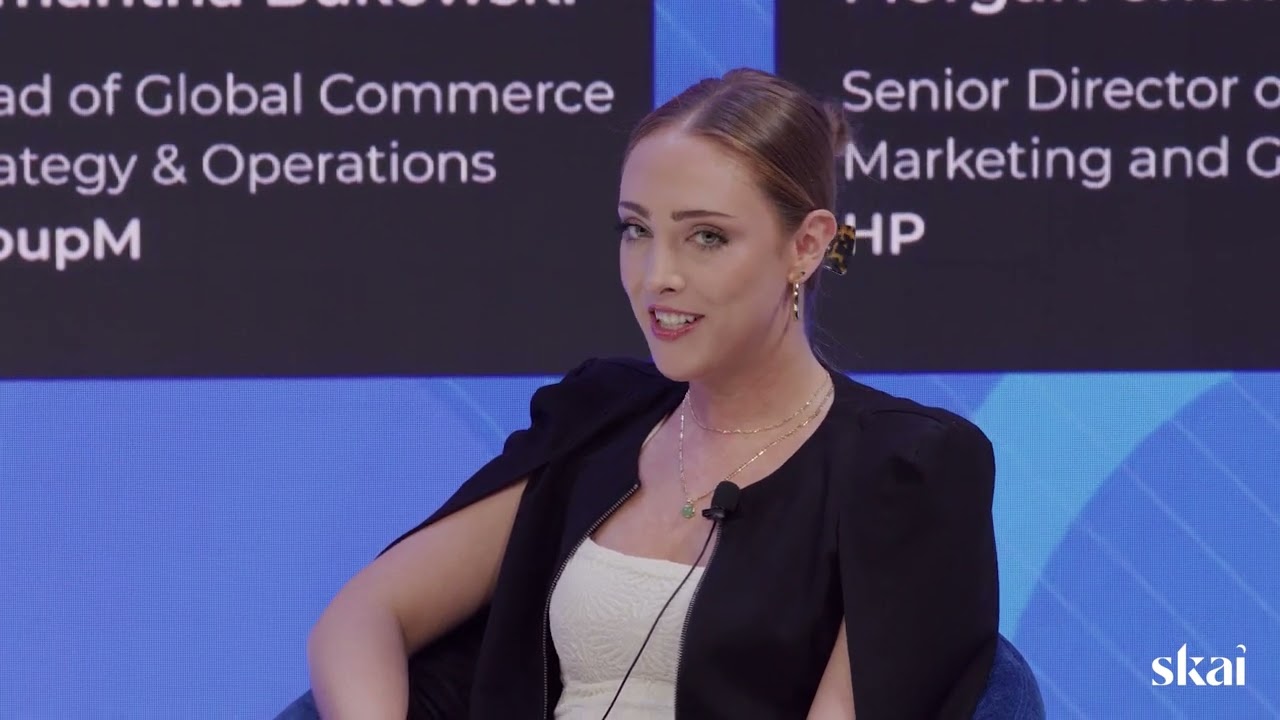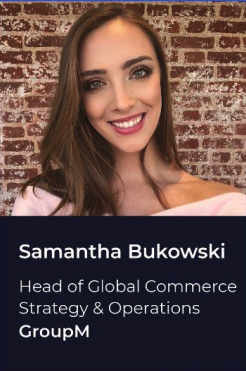
Joshua Dreller
Sr. Director, Content Marketing @ Skai

Joshua Dreller
Sr. Director, Content Marketing @ Skai

By loading the video, you agree to YouTube’s privacy policy.
Learn more
Recently, Skai held ShopAble, a pop-up shop-inspired in-person conference focusing on retail media advertising. It was a fantastic turnout in New York, with clients and industry experts fired up to talk about the ins and outs of this incredibly fascinating channel.
In the second session of the day, Data is Power: The Inputs Relevant to Commerce, Skai’s Vice President, Product Marketing, Megan Harbold, took attendees through some of the recent findings from our new report, The State of Retail Media 2022.
In this complimentary report, Skai and BWG Strategy surveyed mid-level and senior-level decision-makers who spend a key portion of their week in retail media to understand better how marketers are approaching the channel.
Harbold’s first chart from the research was on the kinds of data retail marketers use for retail media execution and optimization.
“Data is the facts that you’re collecting, what you’re analyzing, the inputs to intelligence,” explains Harbold. “Intelligence is the ability to acquire that data and apply it to become knowledge. Without that application, data is worthless. Data on its own is just noise. Data that is segmented or fragmented is noise. Data that is not accessible across the different functions across your organization is noise.”
After presenting a handful of the report’s insights, Harbold invited two expert panelists to the stage to react to some of the findings.
The following is a portion of this conversation.
Harbold: It’s an old story, “right message, right time.” We started having the data we need, but right now, the deprecation of cookies and a couple of major shifts in both regulations and consumer trust create an additional layer of complexity to this puzzle.
Sam, any ideas or things that have come from your clients on how they’re trying to solve this bigger and bigger gap in first-party data?
(Head of Global Commerce Strategy & Operations, GroupM) Samantha
And I think what that looks like is different depending on the category you’re operating in. Some clients are more along the lines of an HP [referring to the other panelist in the session], but then you go and you have a discussion with a consumer packaged goods company where first-party data was not really a core focus. They are starting to think about direct-to-consumer experiences in a new way, so it’s forced all of these new conversations. What we have seen is a lot of exploration, a lot of provocative thinking, and legacy business models have been discussed.
New ways to get that first-party data have been huge. To your point, we just want to continue to make advertising work well for consumers. We don’t want to lose that relevancy. We don’t want to let the deprivation of cookies hinder the consumer experience. There’s a reason why these things are successful when the consumer sentiment is positive.
Our North American CEO Kirk talks about this a lot, but it’s always just about making advertising work better for people at the end of the day. I think there are plenty of solutions out there to do that, even with the privacy constraints that are in play today. We’re finding creative ways to do that, so a little bit of out-of-the-box thinking is pushing the whole industry forward.
(Senior Director of Marketing and Global UX, HP) Morgan Chemij: I think just in
This is the new normal. Every week, every month, there are these new regulations that are coming out. It’s really hard to be future-proof when it comes to some of these elements. So as a brand, we’re working a lot more closely with the likes of the Amazons, Googles, and Facebooks where it’s informed consent, and the customers know exactly what information they’re giving up.
If you think about somebody like The New York Times with no paywall—you can register with your Google account. You know when you give them access that in exchange for this news, you’re giving up some personal details and allowing for a greater degree of targeting as a result of that.
I think a lot of customers are okay with that, and I think for us, we’re really kind of steering more towards those types of partners where the consensus is implied. There’s a whole middle layer that kind of operates in this “gray area,” and we’re slowly starting to move away from those data partners. We think that that’s going to be what customers expect, it’s what customers deserve, and so we are moving much more in that direction.
Harbold: I think that’s a huge takeaway as you look to participate in this land grab for data. You are making sure you keep the line of sight to that consumer experience in a way that’s very informed. I love your point about again how HP only really partners with those who you know have established that trust and transparency.
Visit the YouTube ShopAble 2022 playlist
For more information on Skai’s™ Retail Media solution, contact us to schedule a brief demo and see all of our cutting-edge functionality for yourself.
We use cookies on our website. Some of them are essential, while others help us to improve this website and your experience.
Here you will find an overview of all cookies used. You can give your consent to whole categories or display further information and select certain cookies.